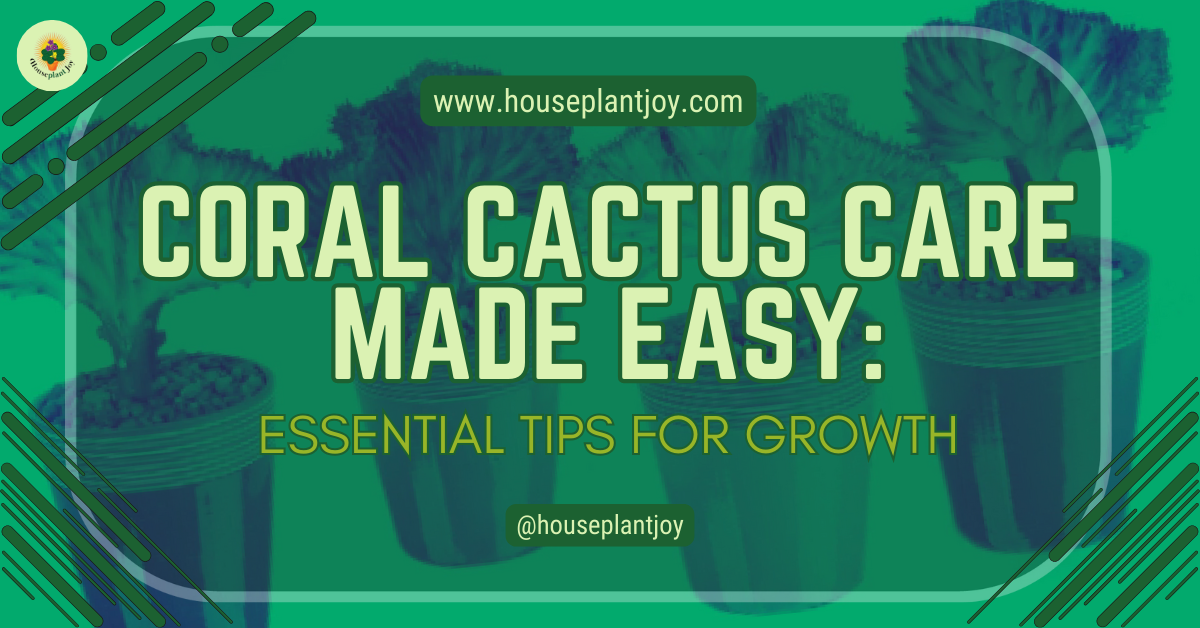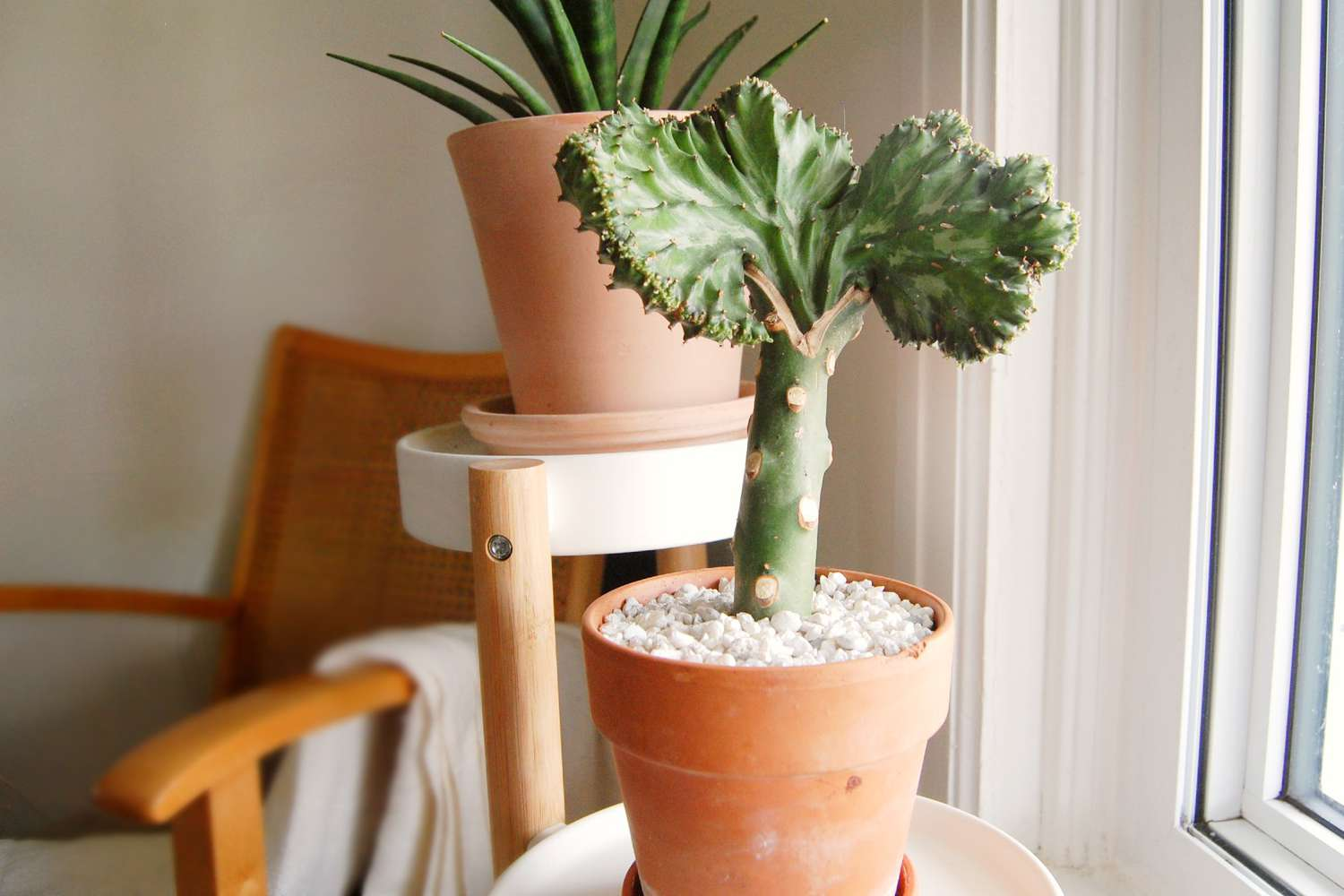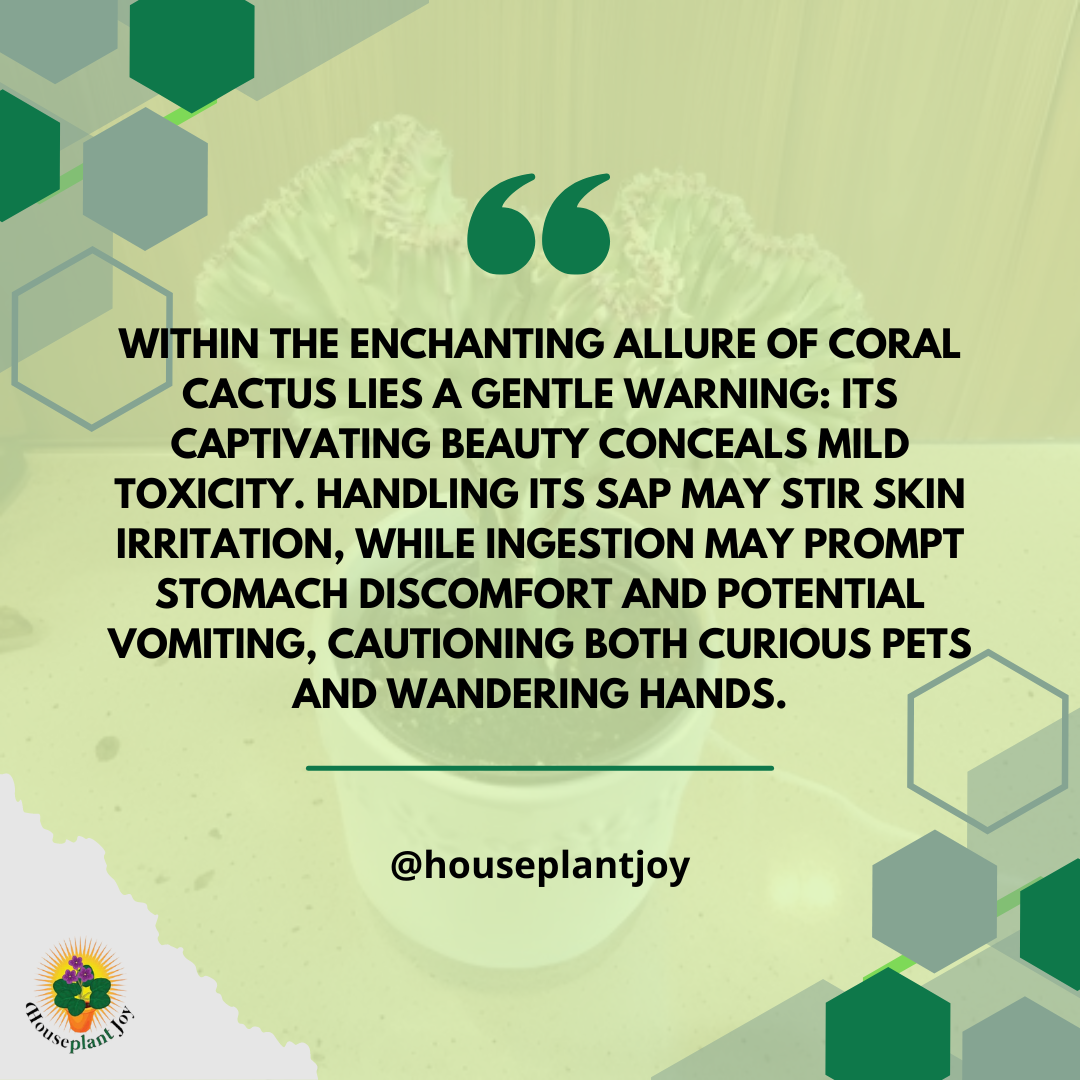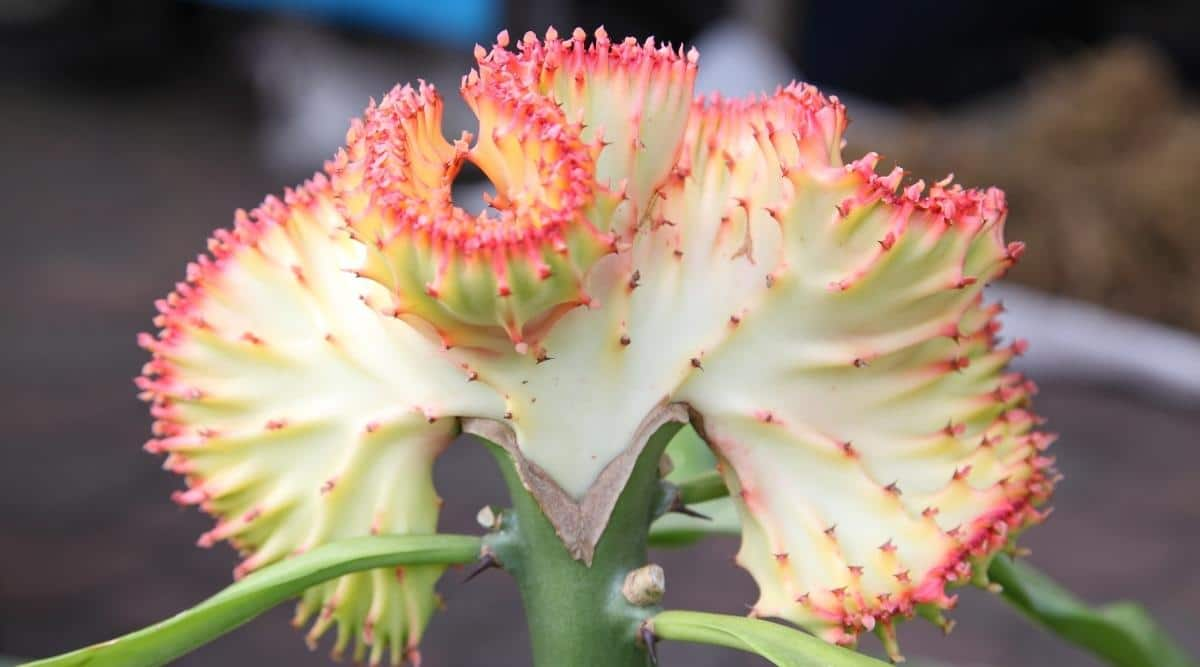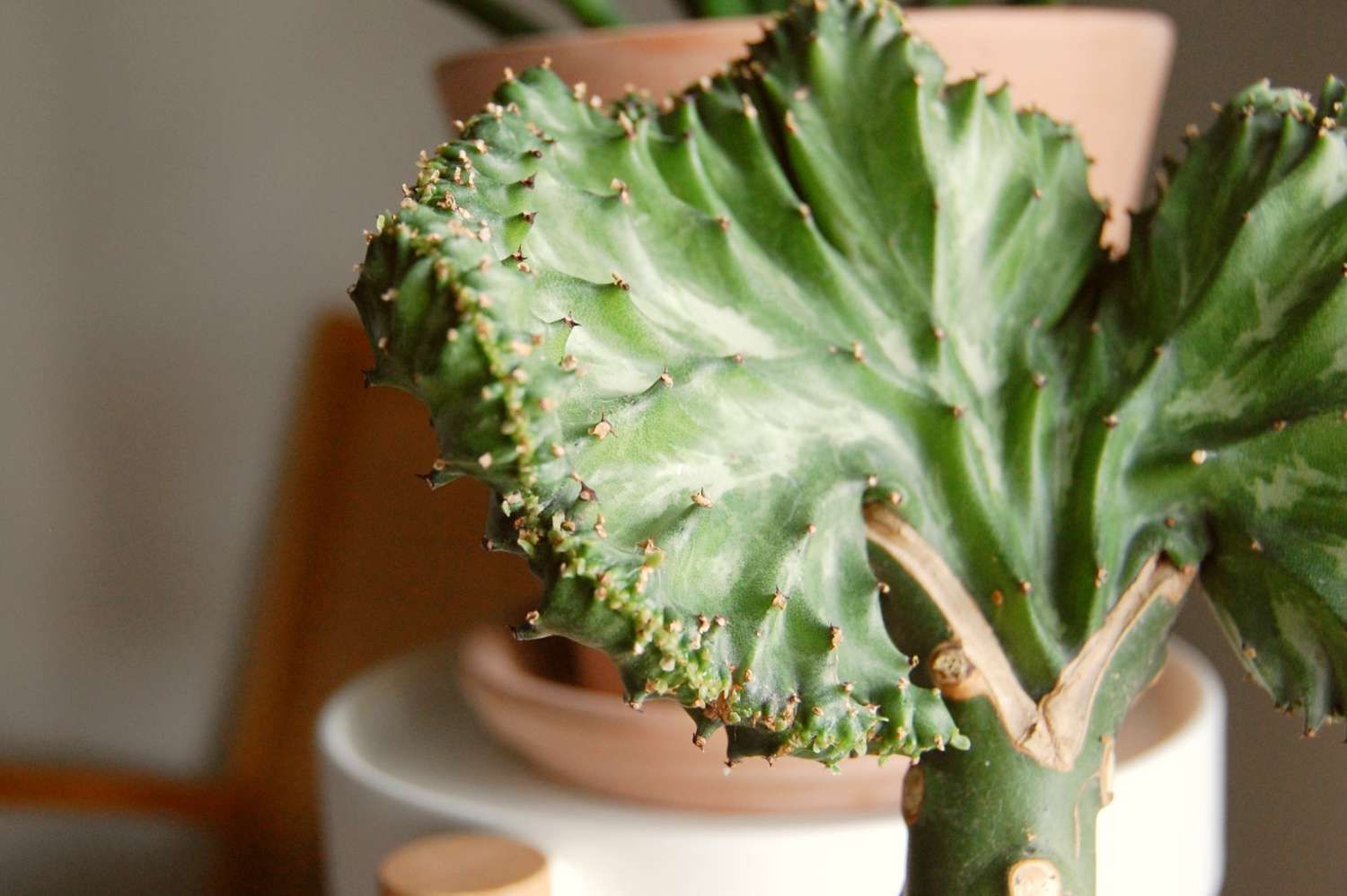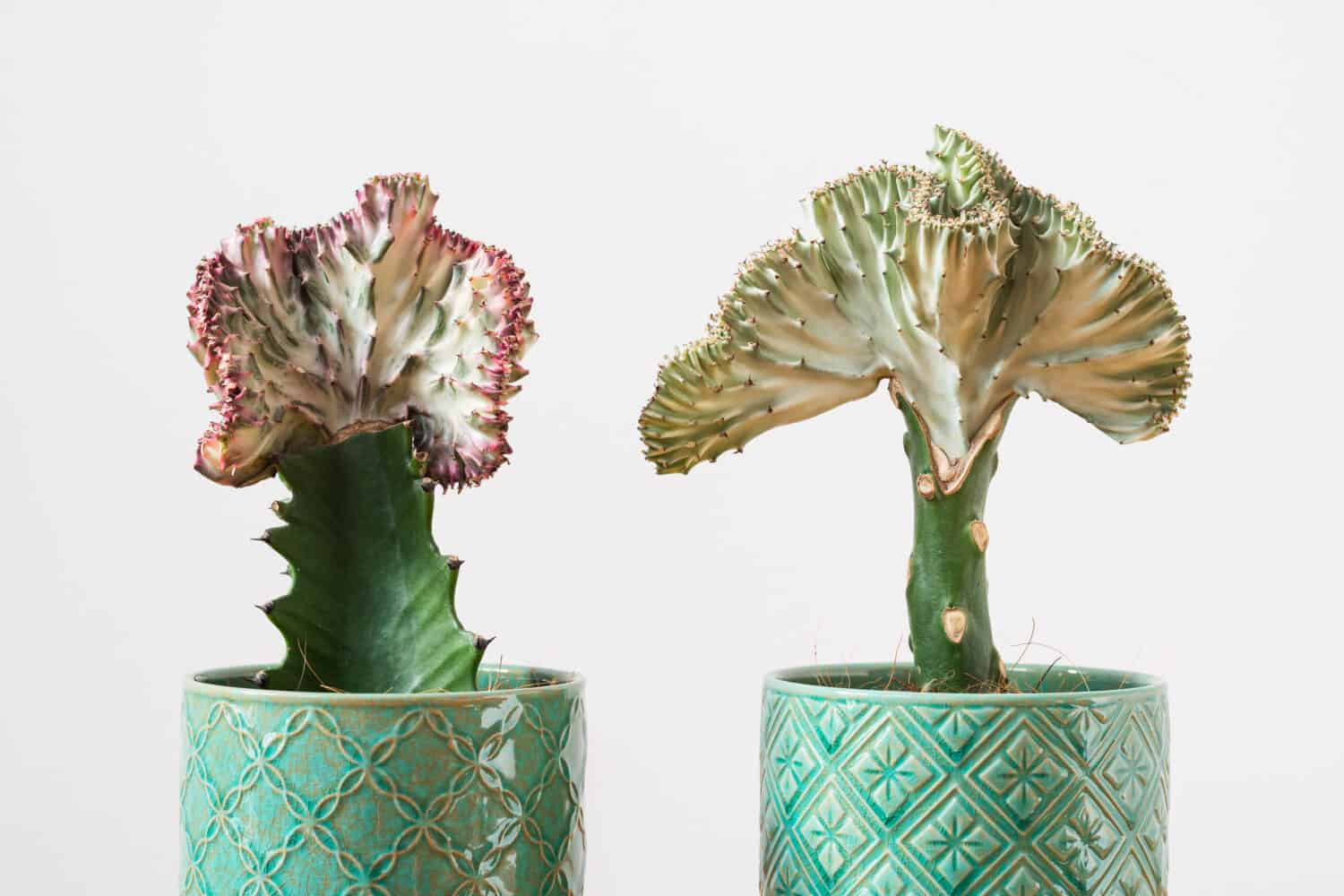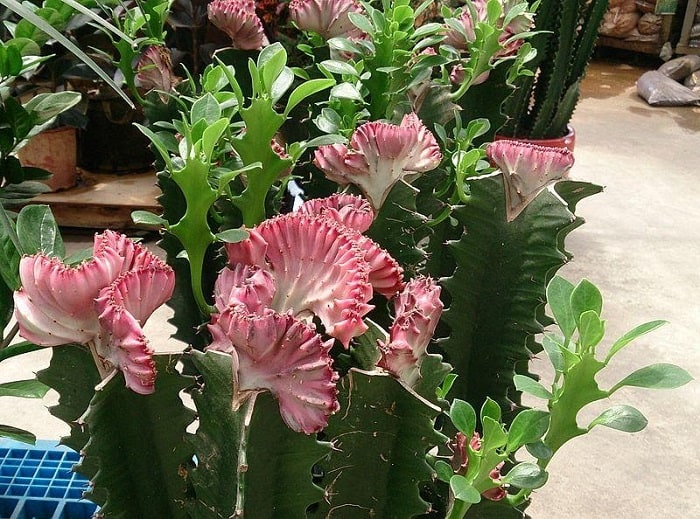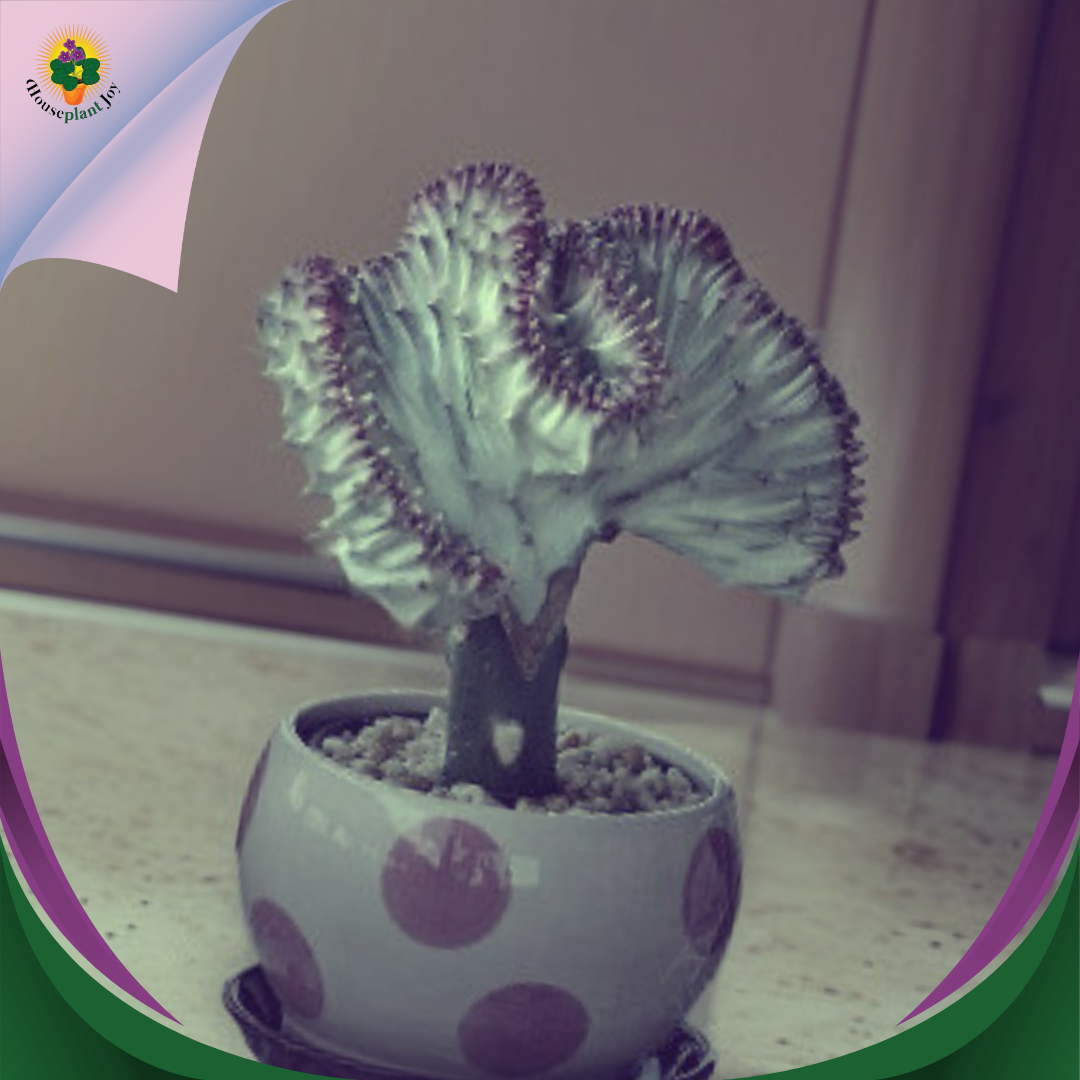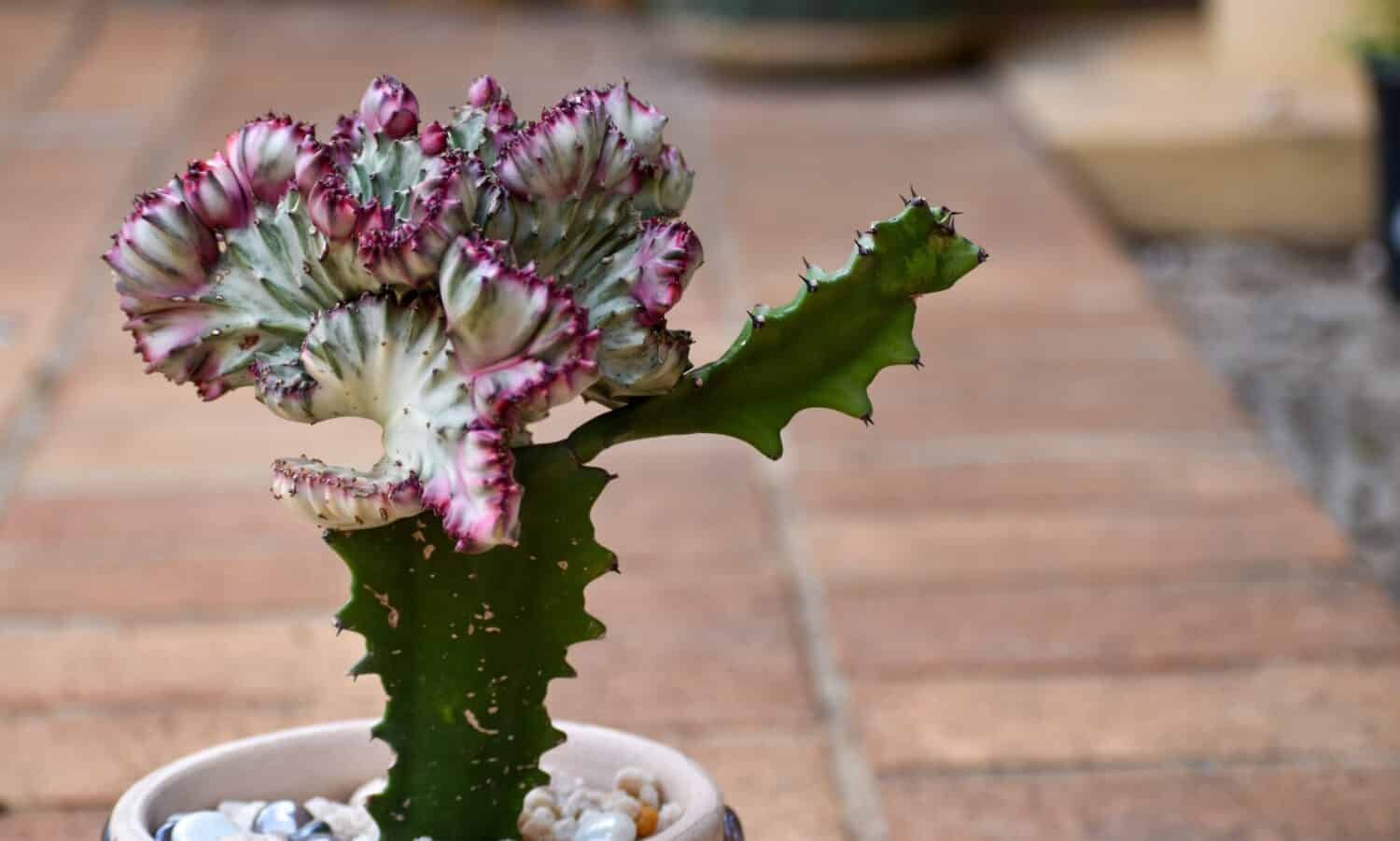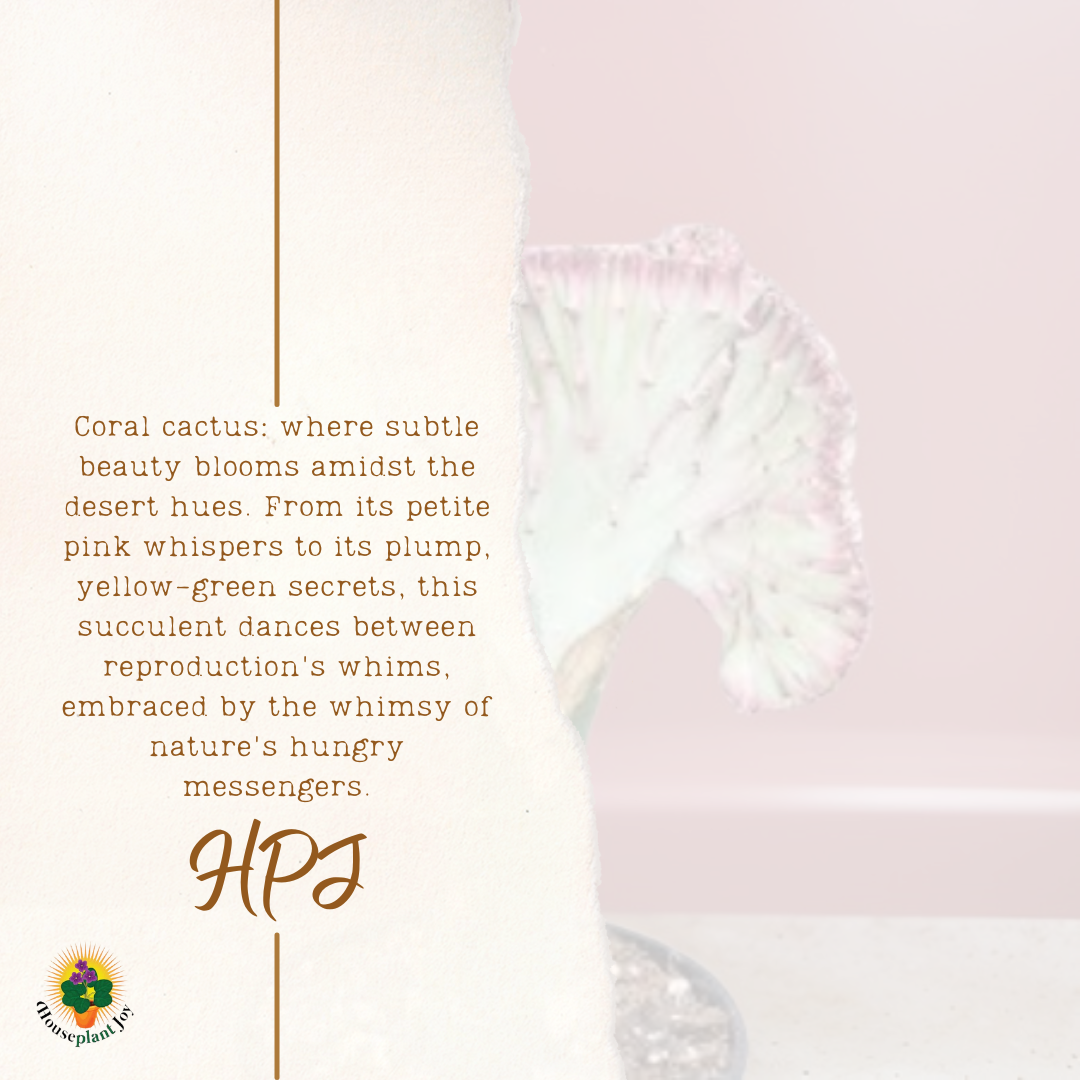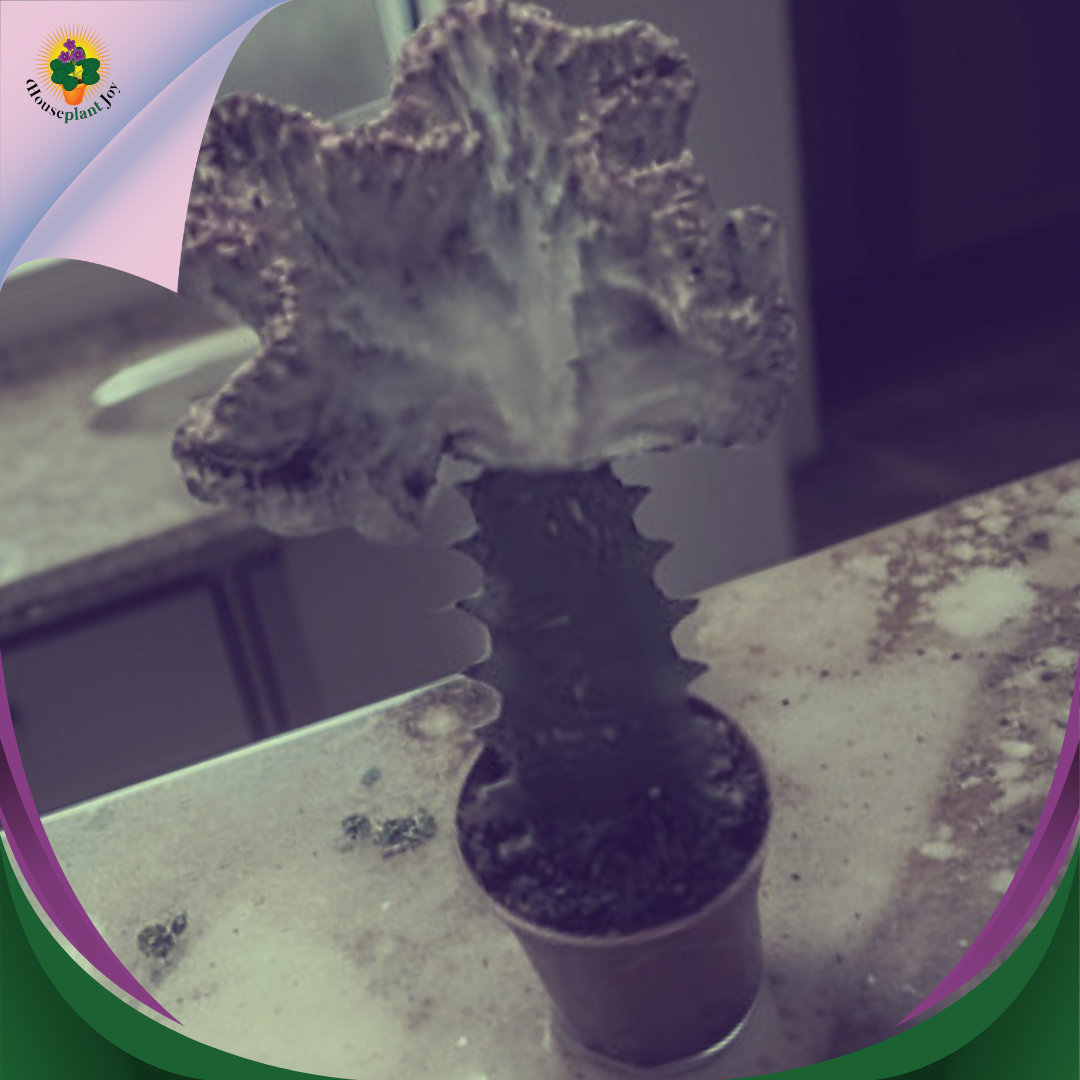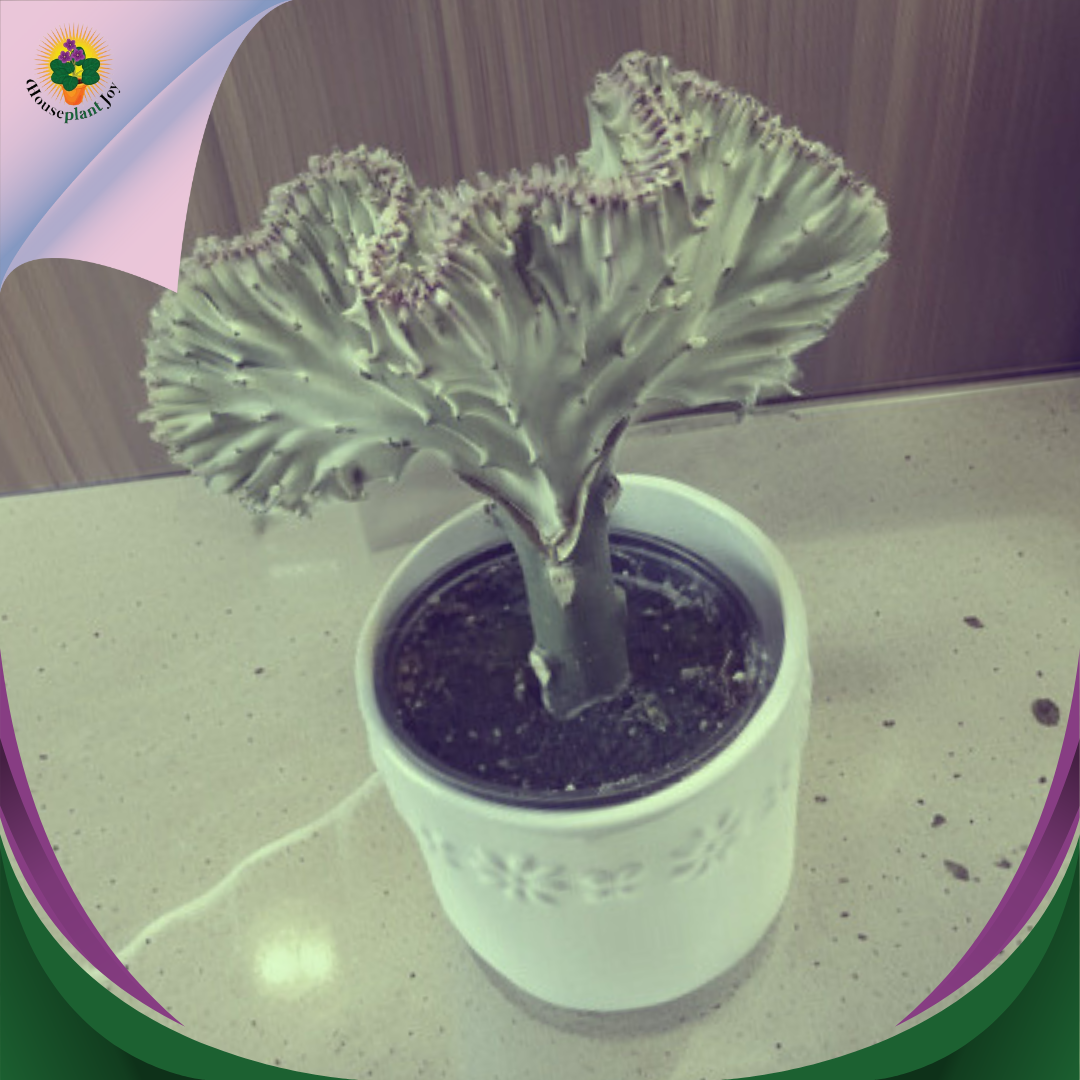HousePlantJoy is supported by our audience. When you purchase through one of our links, we may earn a small affiliate commission. As an Amazon Associate I earn from qualifying purchases. Your cost is not affected.
==================
I’ve always loved the look of the Coral Cactus plant—it is a unique plant with an unusual shape and vibrant color that can add something special to any room. But let me tell you, figuring out how to take care of it was a bit of a journey. It all felt a bit overwhelming initially, from not having it exposed to too much direct sunlight to knowing how often to water it and what kind of soil it likes.
I learned the hard way that a little too much water or not enough light can really affect a coral cactus’s health. That’s why I decided to get down to the basics and find the most straightforward tips for growing one. Now, I want to share these easy care tips with you so you can enjoy growing this eye-catching plant without all the fuss.
Thriving with Elegance: A Guide to Coral Cactus Care
Photo by: The Spruce
Coral Cactus, or Euphorbia lactea Cristata, stands out as an extraordinary succulent resembling a vibrant coral reef. This captivating plant can reach up to 2 feet tall when cultivated in containers.
Caring for this distinct succulent is remarkably simple, as it exhibits impressive drought tolerance. Whether you’re a busy office worker prone to forgetting watering schedules or an avid traveler planning week-long getaways, the Coral Cactus is an ideal companion.
Moreover, it can transform into a breathtaking centerpiece with proper attention, eliciting awe in any garden setting. Explore further to uncover comprehensive guidance on nurturing this exceptional botanical gem.
Key Highlights
- Eye-catching Beauty: Coral cactus brightens up any space with its vibrant colors and unique shape. It’s an easy-care plant, which is ideal for people with busy schedules. This plant is a unique combination of two different plants. Humans crafted coral cactus by grafting plants from Africa and Asia.
- Watering: Don’t overwater; let the soil dry. Coral cactus Likes bright, indirect light.
- Temperature and Humidity: Keep it warm and airy.
- Fertilizing: Feed it occasionally.
- Pruning and Maintenance: Trim damaged parts and watch for pests. You can make new plants from seeds, cuttings, or grafting. For Pest and Disease Tips: Check often and fix issues fast.
Is the Coral Cactus a Cactus?
Photo by: Epic Gardening
Despite its name, the coral cactus is not an actual cactus. It combines two different plants, grafted together to create a striking and otherworldly-looking plant. The top portion of the plant, known as the crest, comprises Euphorbia lactea, which features interesting spines and captivating colors. The bottom portion, or rootstock, is Euphorbia neriifolia, a more structural plant that provides support.
The grafting process involves carefully joining the two plants to create a tree-like structure. The result is a plant resembling sea coral called coral cactus. It is also known as crested Euphorbia or crested candelabra plant, thanks to its resemblance to a candelabra with its multiple branches and interesting shape.
Coral cactus is popular for plant enthusiasts due to its striking appearance and low maintenance requirements. It is a slow-growing succulent that can reach heights up to 2 feet. The colors of the crest can vary, ranging from green to blue-grey to whitish-green, depending on the variety of Euphorbia lactea used. Handle the spines on the crest with caution as they can cause skin irritation. The sap or latex of the plant is also toxic, so it is important to keep it away from children and pets.
Unveiling the Roots: Origins of the Coral Cactus
Photo by: The Spruce
Coral cactus is an intriguing plant that is not found in the wild. It is a cultivated plant created by grafting two different species of Euphorbia. While various species within the Euphorbia genus are native to Africa, the specific species that make up the coral cactus come from Asia, particularly the Indian subcontinent.
Nurturing Your Coral Cactus: Essential Care Tips and Techniques
Photo by: A-Z Animals
Caring for your actively growing Euphorbia lactea plant involves meeting its specific needs regarding watering, lighting, temperature, and humidity. Here are some key considerations:
Watering Necessities
Ensuring proper watering is vital for the health of your coral cactus. Here are some key watering guidelines to remember:
- Avoid Overwatering: This cactus is susceptible to root rot if overwatered. Let the top inch of soil dry out before giving your coral cactus another drink.
- Drought Tolerance: While Euphorbia lactea Cristata can tolerate periods of drought, it is important to provide it with regular watering. During the growing season, try to water your coral cactus every 2-3 weeks. When winter comes and your plant takes a break, go easy on the watering.
- Moisture Levels: Check the soil moisture levels of the soil before watering. If it feels moist, hold off for a few more days before watering.
Lighting Needs
Making sure your coral cactus gets enough light is super important for its growth and overall health. Here are some key considerations for providing the right lighting conditions:
- Hours of Direct Sun: Euphorbia lactea Cristata requires bright, indirect sunlight to thrive. It’s okay if your coral cactus gets a couple of hours of direct sunlight, but too much intense sun can actually give it a sunburn and harm the plant. So, keep an eye on that sunlight exposure!
- Indirect Light: Find a spot for your coral cactus where it can soak up bright, indirect light throughout the day. An east-facing window works great—it gives the plant some morning sun and nice, indirect light in the afternoons.
- Intense Heat: Avoid exposing your Euphorbia lactea Cristata to intense heat, especially during summer. The plant can handle a bit of heat, but staying in high temperatures for too long can lead to damage and stress.
Temperature and Humidity Requirements
Euphorbia lactea Cristata has specific temperature and humidity requirements to thrive. Here’s what you need to know:
- Temperature: Euphorbia lactea Cristata prefers warm temperatures and is not cold-tolerant. It should be kept in an environment with temperatures consistently above 60°F. In colder regions, keeping the plant indoors or providing protection during the winter months is best.
- Humidity: Although coral cactus can handle high humidity, too much moisture can cause problems like powdery mildew. Make sure there’s good airflow around the plant and avoid misting it to prevent humidity-related issues.
- USDA zones: Euphorbia lactea Cristata is suitable for USDA zones 10-12, where the climate is warm and frost-free year-round. In colder areas, you can cultivate it indoors or in pots that you can bring inside during winter.
Fertilizing Your Coral Cactus
Euphorbia lactea Cristata is a slow grower that does not require frequent fertilization. However, providing a light nutrient boost can help promote healthy growth. Here’s what you need to know about fertilizing your coral cactus:
- Slow Grower: Coral cactus is naturally slow-growing and does not require heavy fertilization. A balanced general fertilizer can provide the necessary nutrients without overstimulating growth.
- Fertilizer Choice: Choose a fertilizer specifically formulated for succulents or cacti. This fertilizer will provide the appropriate balance of nutrients for your coral cactus.
- Growth Period: Fertilize your coral cactus every 6-8 weeks during the spring and summer when it is in its active growth phase. Reduce or stop fertilizing during the fall and winter as the plant enters a dormant period.
Here’s an extra video providing more insights on caring for coral cactus.
By: Martin’s Home & Garden
Pruning Tips
Photo by: Yard Surfer
Keeping up with regular pruning is key to keeping your coral cactus healthy and looking its best.
- Pruning: Regularly trim any unwanted growth or damaged parts of your coral cactus. Grab some sharp scissors or pruning shears to make precise cuts. Doing this keeps your plant looking neat and prevents it from getting too crowded.
- Original Shape: When pruning, remember the plant’s original shape. Coral cactus is known for its unique form, so preserving its distinctive appearance is important.
Propagating Coral Cactus: Methods and Techniques
Photo by: A-Z Animals
Coral cactus can be propagated through a few different methods. Here are the main methods you can use:
Seed Propagation
Coral cactus can be propagated from seeds, although it is a less common method than other succulents. Here’s what you need to know about seed propagation:
- Seed Collection: Allow the coral cactus flower to bloom and produce seeds. Collect the seeds once the flowers have dried out and turned brown.
- Seed Preparation: Before sowing the seeds, it is beneficial to scarify them by gently scratching the surface to help germinate.
- Sowing the Seeds: Plant them in a well-draining soil mix and lightly cover them with soil.
- Germination and Growth: The seeds can germinate for several weeks. Once they have sprouted, please provide bright, indirect light and regularly water them.
Propagating from Cuttings
Propagating coral cactus from stem cuttings is a common and reliable method. Here’s how to do it:
- Select a Healthy Stem: Choose a healthy stem that is free from damage or disease. For a nice, clean cut, use sharp and clean scissors or pruning shears.
- Callusing: Allow the cut end of the stem to callus over for a few days. This helps prevent rotting and promotes successful rooting.
- Planting the Cutting: Once the cut end has callused, plant the cutting in a well-draining soil mix.
- Root Development: Place the cutting in a warm, bright location with indirect light.
Grafting
The most common and reliable method of propagating coral cactus is through grafting. This involves combining the crest of Euphorbia lactea with the rootstock of Euphorbia neriifolia. Experienced gardeners should do grafting.
Managing Pests and Diseases in Coral Cactus: Identifying and Treating Common Issues
Photo by: Plant Care Today
Despite its resilience, the coral cactus can be vulnerable to a few prevalent pests and diseases. Here’s a guide to recognizing and addressing them:
Pests
- Mealybugs: Mealybugs are recognizable by their white, cottony fluff on stems and joints.
- Scale: Identified by hard, brown bumps on stems and leaves undersides.
- Spider Mites: Their presence is indicated by tiny webs and yellow stippling on leaves.
Acting quickly is important for dealing with pests on your cactus. Start by separating the affected plant right away to stop pests from spreading to other nearby plants.
For minor pest issues, gently remove any visible bugs using a cotton swab dipped in rubbing alcohol. Alternatively, consider using neem oil spray, prepared according to the product instructions, and thoroughly spray the entire plant, including the undersides of leaves. Repeat this application every few days until the pests are eradicated. Additionally, insecticidal soap spray can serve as another effective option for pest control, providing a comprehensive approach to safeguarding your cactus.
Diseases
- Root Rot: Flourishing in consistently moist soil, this fungal disease manifests through mushy stems, yellowing leaves, and inhibited growth.
- Fungal Diseases (Powdery Mildew, Botrytis): Characterized by white powdery patches for powdery mildew and fuzzy gray mold for Botrytis, these diseases commonly affect stems and leaves.
Isolation and root rot are common concerns with coral cactus. For mild cases of root rot, it’s advisable to decrease the watering frequency and enhance drainage by ensuring that the pot has proper drainage holes to prevent further moisture buildup. However, in severe instances, it’s necessary to repot the plant using fresh, well-draining succulent soil mix.
During repotting, carefully remove any rotten roots using sterilized shears and treat the remaining healthy roots with a fungicide before replanting to prevent the spread of fungal rots. Additionally, fungal diseases can arise, often due to poor air circulation. To combat this, it’s essential to improve airflow around the plant. Any infected parts should be promptly removed, and the affected areas should be treated with a fungicide appropriate for the specific disease.
Here’s an extra video featuring different types of cacti that you might find interesting.
By: PlantDo Home & Garden
Cultivating Healthy Coral Cactus with Confidence
Coral cactus, a unique and striking plant, requires specific care to thrive. Understanding its origin, proper planting techniques, and essential care tips are crucial for well-being.
You can enjoy its beauty in your indoor space by providing adequate lighting, watering, and maintaining the right temperature. Remember to propagate correctly and troubleshoot common issues promptly to ensure its health.
Now, as I share my insights with fellow plant enthusiasts, I invite you to embark on your journey of coral cactus care. Following these guidelines will help cultivate a healthy and vibrant coral cactus in your home. Enjoy nurturing this fascinating plant and watching it flourish in your care. Whether you’re a seasoned green thumb or a novice in the world of houseplants, there’s a joy to be found in nurturing these captivating succulents.
For more tips, guidance, and inspiration on caring for your coral cactus and other houseplants, visit Houseplant Joy. Let’s cultivate beauty and serenity together in our homes and gardens.
Frequently Asked Questions
What Is the Best Soil for Repotting Coral Cactus?
We recommend using a well draining potting mix specially formulated for succulent plants. This helps with good drainage and avoids soggy soil, which could cause root rot.
How Often Should I Repot My Coral Cactus?
Coral cacti generally prefer being slightly root-bound, so you only need to repot them every two to three years or when they outgrow their current container. Keep an eye on their root system; if it’s becoming crowded, it’s time for a new pot.
Is It Necessary to Let the Soil Dry Completely Before Repotting My Coral Cactus?
It’s essential to work with completely dry soil when repotting succulent plants like coral cacti. Handling wet soil can damage the roots and potentially cause root rot.

